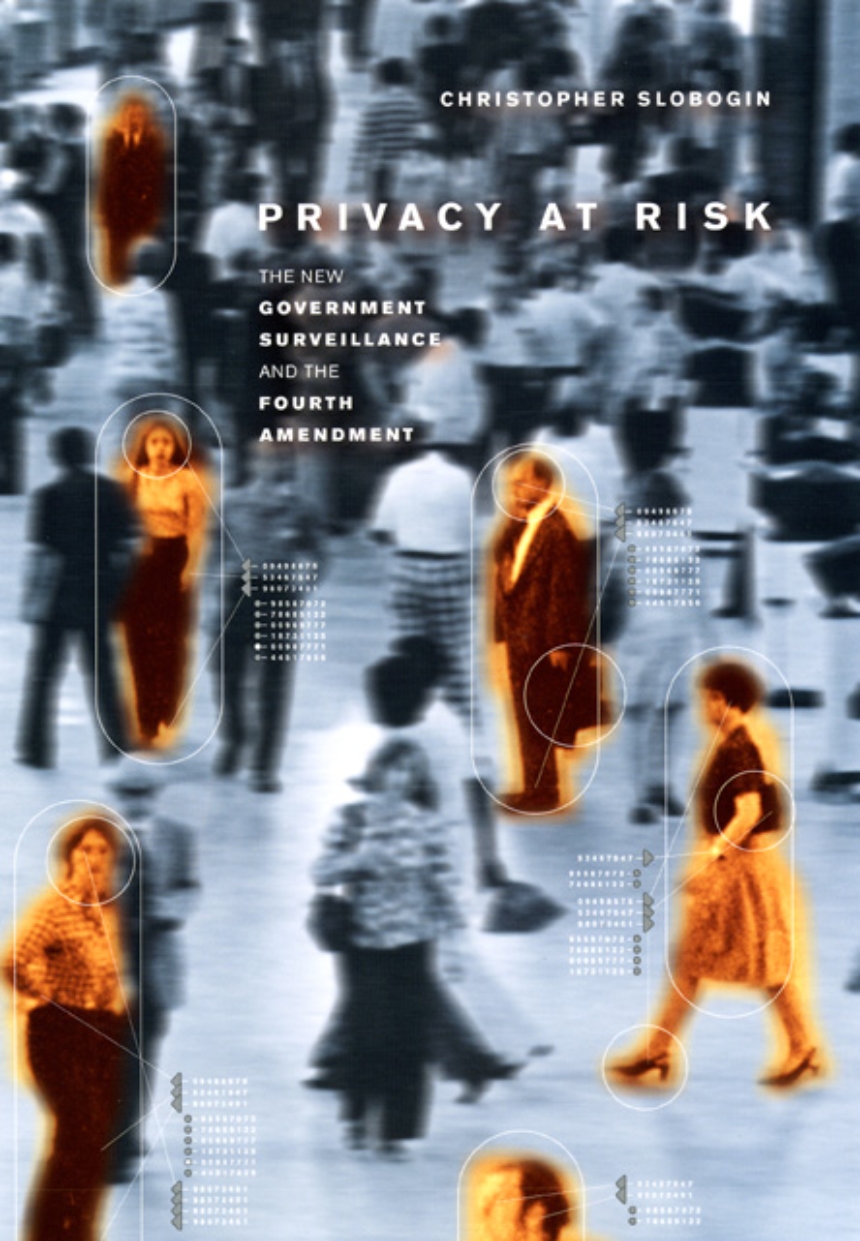Privacy at Risk
The New Government Surveillance and the Fourth Amendment
Without our consent and often without our knowledge, the government can constantly monitor many of our daily activities, using closed circuit TV, global positioning systems, and a wide array of other sophisticated technologies. With just a few keystrokes, records containing our financial information, phone and e-mail logs, and sometimes even our medical histories can be readily accessed by law enforcement officials. As Christopher Slobogin explains in Privacy at Risk, these intrusive acts of surveillance are subject to very little regulation.
Applying the Fourth Amendment’s prohibition on unreasonable searches and seizures, Slobogin argues that courts should prod legislatures into enacting more meaningful protection against government overreaching. In setting forth a comprehensive framework meant to preserve rights guaranteed by the Constitution without compromising the government’s ability to investigate criminal acts, Slobogin offers a balanced regulatory regime that should intrigue everyone concerned about privacy rights in the digital age.
Applying the Fourth Amendment’s prohibition on unreasonable searches and seizures, Slobogin argues that courts should prod legislatures into enacting more meaningful protection against government overreaching. In setting forth a comprehensive framework meant to preserve rights guaranteed by the Constitution without compromising the government’s ability to investigate criminal acts, Slobogin offers a balanced regulatory regime that should intrigue everyone concerned about privacy rights in the digital age.
274 pages | 3 tables | 6 x 9 | © 2007
Law and Legal Studies: Law and Society, The Constitution and the Courts
Political Science: Public Policy
Reviews
Table of Contents
Preface
I. Surveillance and the Fourth Amendment
Chapter 1. Introduction: Surveillance Techniques and the Law
Chapter 2. A Fourth Amendment Framework
II. Physical Surveillance
I. Surveillance and the Fourth Amendment
Chapter 1. Introduction: Surveillance Techniques and the Law
Chapter 2. A Fourth Amendment Framework
II. Physical Surveillance
Chapter 3. Peeping Techno-Toms
Chapter 4. Public Privacy: Surveillance of Public Places and the Right to Anonymity
Chapter 4. Public Privacy: Surveillance of Public Places and the Right to Anonymity
Chapter 5. Implementing the Right to Public Anonymity
III. Transaction Surveillance
Chapter 6. Subpoenas and Privacy
Chapter 7. Regulating Transaction Surveillance by the Government
Chapter 8. Conclusion: A Different Fourth Amendment?
Notes
Index
